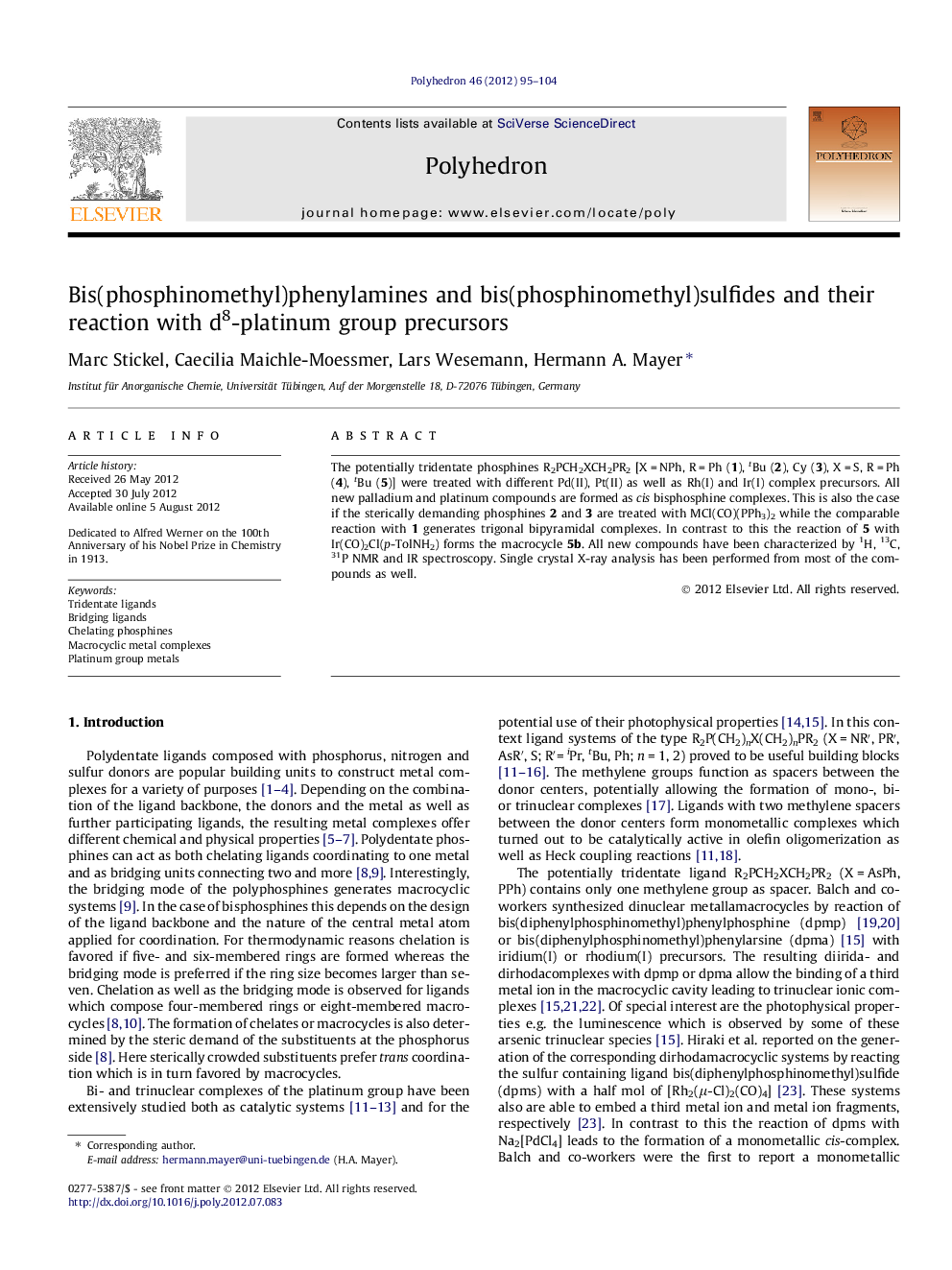| Article ID | Journal | Published Year | Pages | File Type |
|---|---|---|---|---|
| 1334706 | Polyhedron | 2012 | 10 Pages |
The potentially tridentate phosphines R2PCH2XCH2PR2 [X = NPh, R = Ph (1), tBu (2), Cy (3), X = S, R = Ph (4), tBu (5)] were treated with different Pd(II), Pt(II) as well as Rh(I) and Ir(I) complex precursors. All new palladium and platinum compounds are formed as cis bisphosphine complexes. This is also the case if the sterically demanding phosphines 2 and 3 are treated with MCl(CO)(PPh3)2 while the comparable reaction with 1 generates trigonal bipyramidal complexes. In contrast to this the reaction of 5 with Ir(CO)2Cl(p-TolNH2) forms the macrocycle 5b. All new compounds have been characterized by 1H, 13C, 31P NMR and IR spectroscopy. Single crystal X-ray analysis has been performed from most of the compounds as well.
Graphical abstractThe coordination behavior of potentially tridentate phosphine ligands which contain either nitrogen or sulfur as additional units have been investigated.Figure optionsDownload full-size imageDownload as PowerPoint slide
